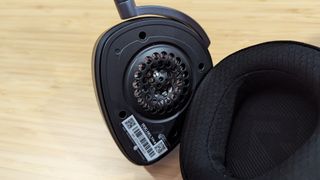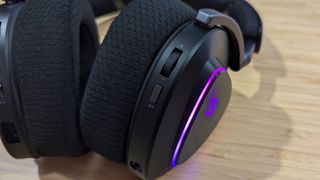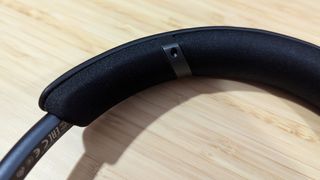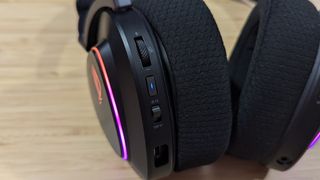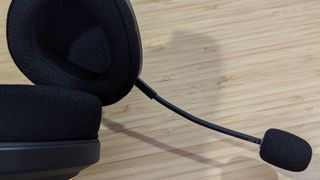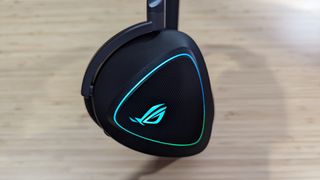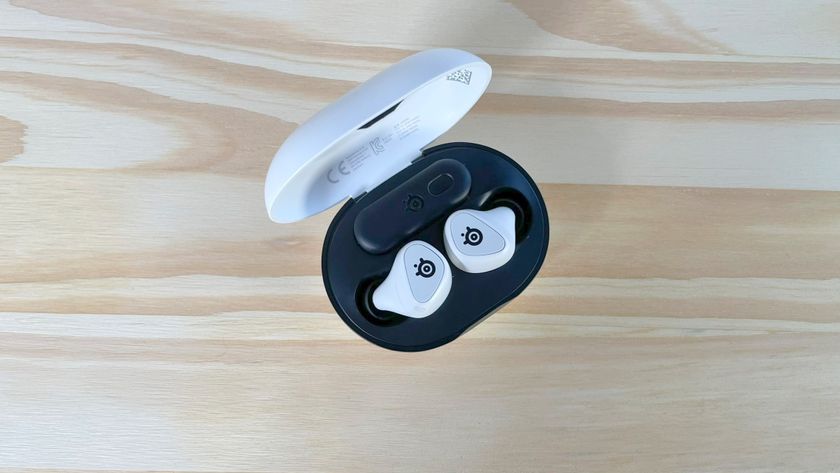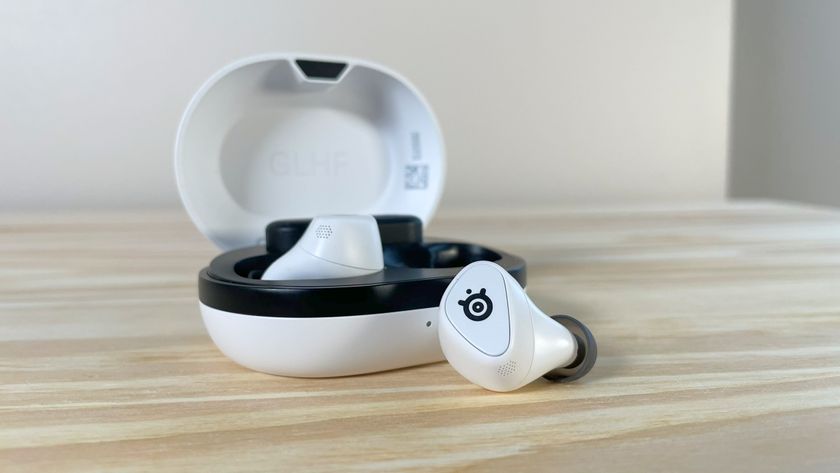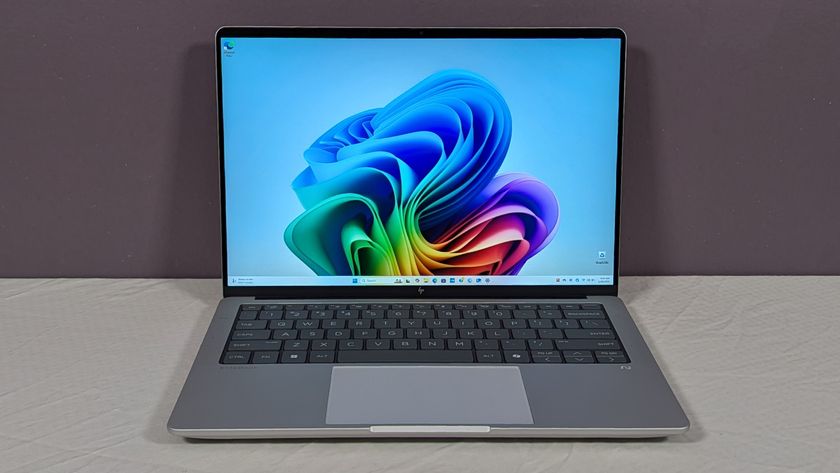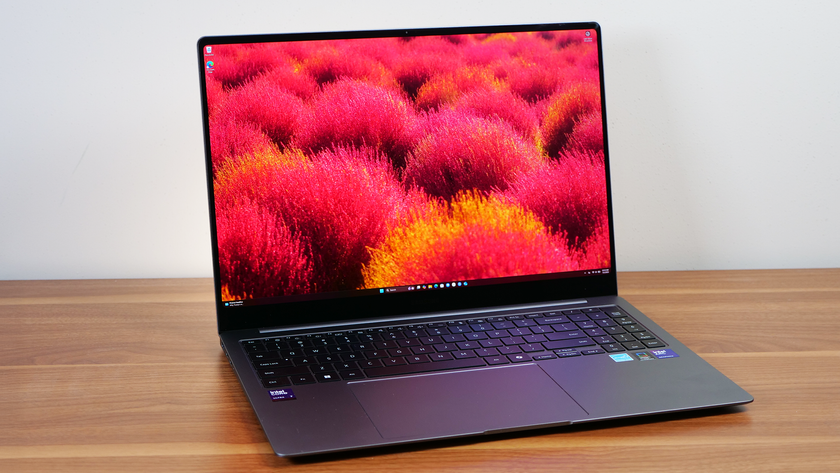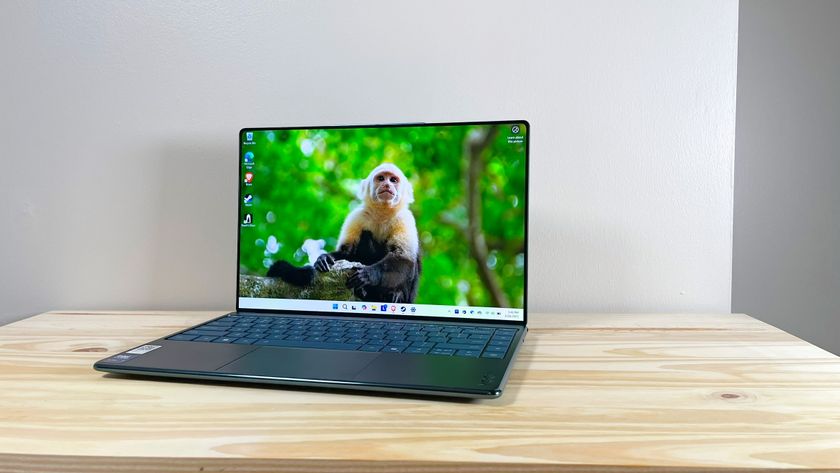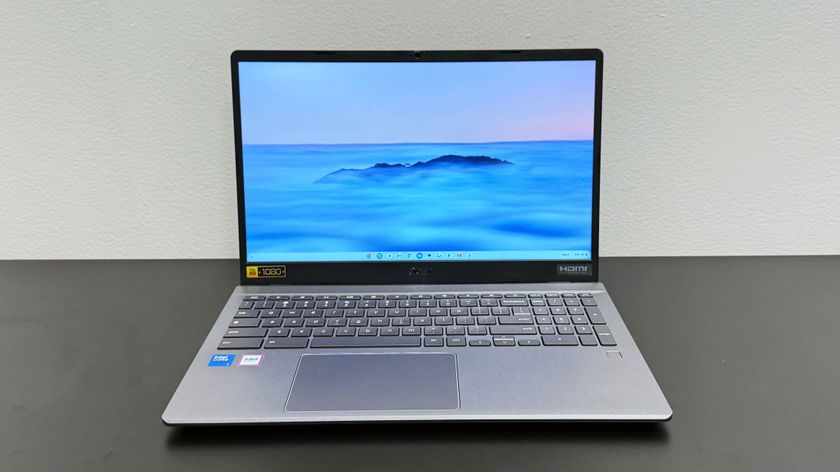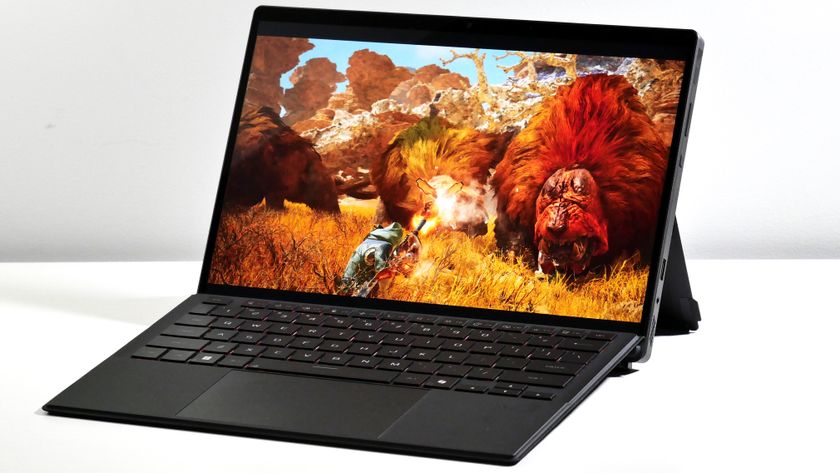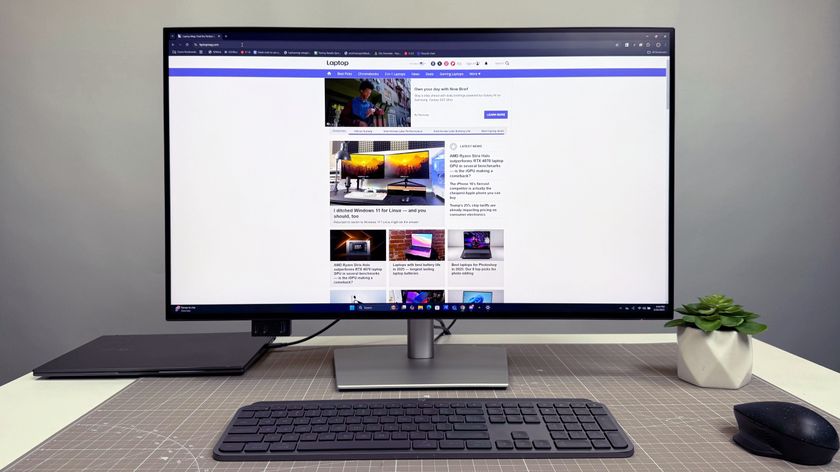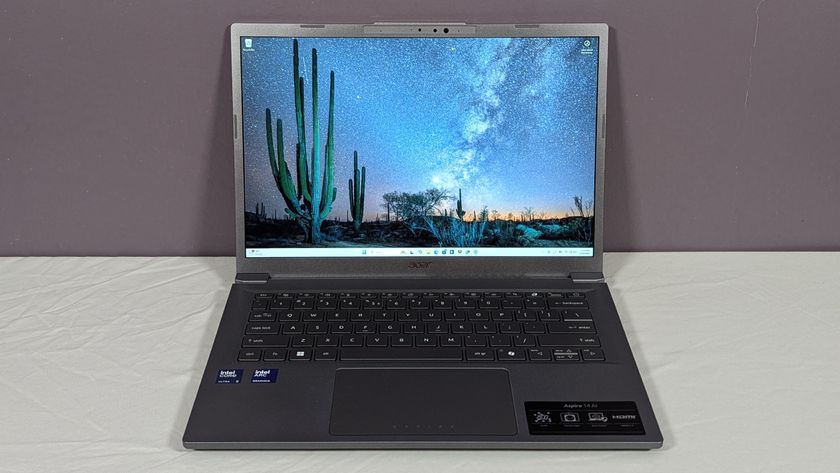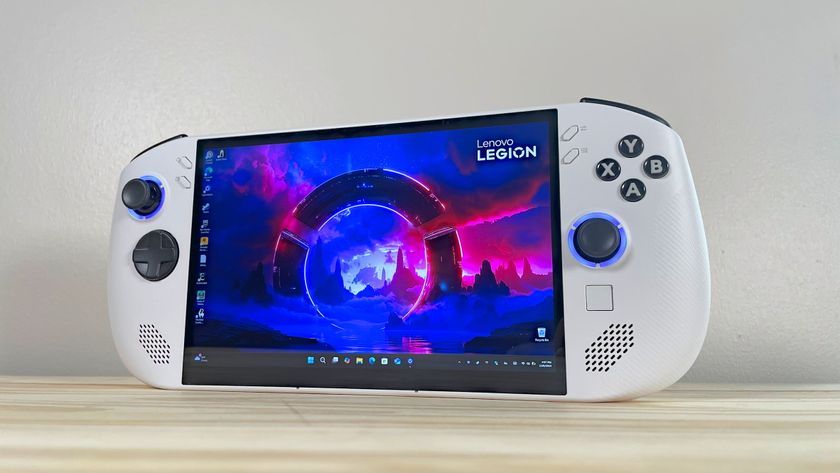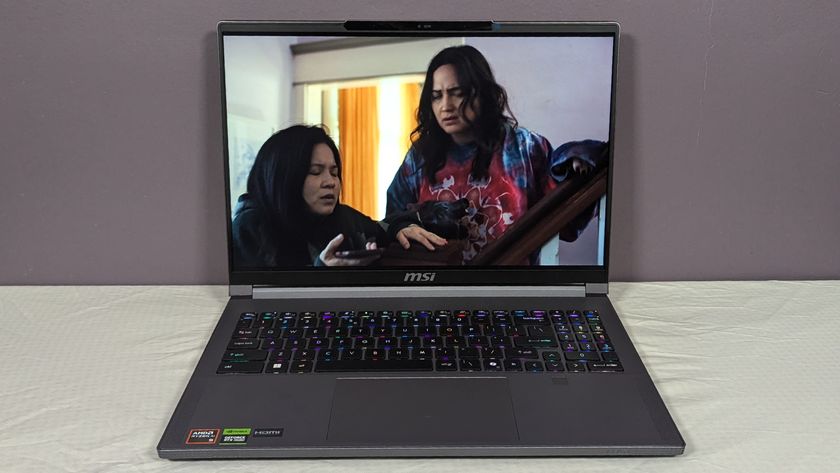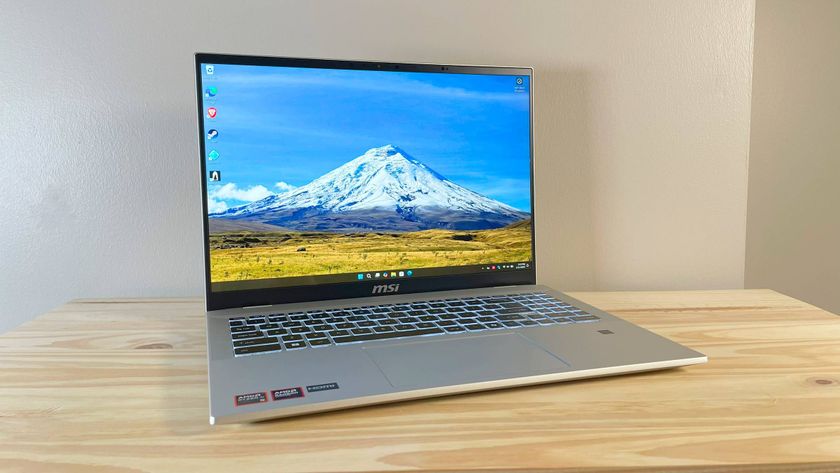Laptop Mag Verdict
The Asus ROG Delta II benefits from solid sound, awesome dual-source audio, and replaceable ear cushions, but the discomfort of its design and poorly configured base settings make it fall short of greatness.
Pros
- +
Loud and clear
- +
Replaceable ear cushions
- +
Doesn’t disconnect at long distances
- +
Phenomenal battery life
- +
DualFlow Audio is awesome
Cons
- -
Speakers sound distant at low volumes
- -
Base settings are flat
- -
Uncomfortable to wear
- -
Poor microphone
Why you can trust Laptop Mag
The latest premium gaming headset from Asus misses the mark in its quest for greatness, but its best features are something I want to see in every competing gaming headset.
The Asus ROG Delta II is a tri-mode wireless gaming headset, which means it can connect through 2.4GHz, Bluetooth, and wired modes. While it boasts some cool features, like interchangeable ear cushions and the incredible DualFlow Audio, it’s a wireless gaming headset that asks for a premium price but cannot quite deliver.
Beyond just its most exciting aspects, you can expect solid audio, connectivity that won’t falter even at far distances, and long-lasting battery life. Still, with an uncomfortable design, flat default settings, and a poor microphone, it’s not a headset I’d use in the long term, except for its amazing ability to connect to multiple sources at once. Regardless, it still has plenty of great qualities, so keep reading to see if it’s right for you.
Asus ROG Delta II: Price and configuration
The Asus ROG Delta II is a premium gaming headset that’s reserved for those willing to spend a decent bit of cash, as it’s available for $229 on Amazon. There’s only one model available in its black color scheme, and it doesn’t feature alternate configurations.
Asus ROG Delta II: Design
While the Delta II boasts some cool features, it asks for a premium price but cannot quite deliver.
There’s no dodging that the ROG Delta II looks like a stereotypical gaming headset with its all-black aesthetic and RGB LED lights surrounding the exterior of the cups, making the sides of your head light up like a Christmas tree.
The Delta II’s premium design is especially felt in its interchangeable earcups, as it comes with PU leather ear cushions built into the headset. Still, within the box, there are two mesh fabric ear cushions as well. I felt the PU leather ear cushions were too tight against the head, so I slipped them off the headset and slid the mesh fabric ones in instead. Simply push each corner over the thin plate, which snugly fits in.
On the left side is a switch that toggles 2.4Ghz mode on and off, alongside a volume slider for when the headset is connected via 2.4Ghz mode. If you press the volume slider, it will toggle whether or not the microphone is muted.
On the right side is the Bluetooth connectivity button, which you can press and hold to turn on the Bluetooth power. Then, you can hold the button longer to start the pairing process. Above is the volume of the speakers when connected over Bluetooth. Yes, there are two separate volume sliders for whether it’s connected to 2.4GHz mode or Bluetooth mode, but this directly relates to the headset's DualFlow audio.
DualFlow Audio means you can connect the headset via two sources. For example, you can use a 2.4Ghz connection on your computer and then over Bluetooth on your phone to hear audio from both simultaneously, with the individual volume sliders allowing you to control them separately. I tested this with my computer and laptop, which allowed me to listen to music through my laptop while hearing my friends in a Discord call on my computer.
As for ports, there’s the USB Type-C port on the left and the audio jack on the right if you prefer your audio wired. The spot where you insert the microphone sits lowest on the left side, although you cannot just slot it in haphazardly, as it has a triangular base that needs to be inserted at an exact angle.
Weighing 0.7 pounds, the Asus ROG Deltas II is light enough to wear without feeling particularly cumbersome, but it does have comfort issues that do not relate to its weight.
Asus ROG Delta II: Comfort
While I appreciate that Asus has included two different ear cushion options (one made of PU leather and another made of memory foam), neither changes the fact that the headset is uncomfortable after extended use. The worst offender is the headband, which features a painfully thin memory foam cushion but doesn’t occupy the entire space. Reflective silver plates separate two firm sections at the left and right from the cushioned middle section.
The top cushioned part is simply too thin, and it has sharp notches along its surface that lightly indent into the top of my head while wearing the headset. It becomes uncomfortable after only an hour of use. While I do prefer the memory foam ear cushion over the PU leather, there is still a light pressure around the ears that is not present on my Razer Blackshark V2 Pro, which features far more comfortable Flowknit memory foam ear cushions and a headband.
Asus ROG Delta II: Sound quality
Built with 50mm titanium-plated diaphragm drivers and high-resolution 24-bit 96 kHz audio, the ROG Delta II’s sound initially disappointed me when connected via Bluetooth mode, as the audio sounded muffled and distant at moderate volumes (anything under 70 volume on my PC sounds flat).
Whereas other headsets I use are quiet at decreased volumes, the Delta II sounds as if the speakers are in a different room, and it’s rather unpleasant. I initially believed this reflected the headset quality, but increasing the volume to 80 and higher fixes the problem, and the quality becomes powerful and punchy. Just remember you’ll want to keep this at higher volumes, and you’ll get an impactful, loud, and crisp sound. You’ll also want to modify its settings through Armoury Crate, as its default settings are flat.
I launched Elden Ring and could feel the bass of the title music as I entered the Shadows of the Erdtree expansion. Atmospheric sound design is a key aspect of many FromSoftware games, and the Delta II did a great job translating the calm winds alongside the melancholic strings of the open-world soundtrack.
I listened to the atmospheric synth song “1950” by King Princess. I happily sang along as its crisp vocals, well-balanced piano, and percussion blasted through my headphones. While it’s a rather relaxing song, I could feel the vibrations of each piano key and guitar strum. It’s tangibly impactful and comfortable to listen to, and it doesn’t fall apart at its loudest volumes, maintaining its balance and oomph.
Asus ROG Delta II: Microphone
Gaming headset microphones are rarely good, and the ROG Delta II is no exception. I listened to myself, but it came across as flat and muffled, but it’s more than enough if you need a microphone to chat with friends casually. It’s clear and loud enough to be bearable at the very least, but don’t expect anything at the level of a dedicated desk microphone.
Asus ROG Delta II: Battery life
Asus advertises 110 hours of battery life with the ROG Delta II’s RGB LED lights off, and it can yield 11 hours of longevity from just 15 hours of charging through its USB Type-C port. From my testing, I used the headset every day for over a week without recharging it. I timed it, and over four hours, the battery only went down by 6% with RGB lights on over constant use. This means the headset should last anywhere from 60 to 70 hours, based on my testing.
Asus ROG Delta II: Software
Akin to any Asus ROG device, you’ll be utilizing Armoury Crate to modify settings for the Delta II. Unlike some other headsets I’ve used, we highly recommend modifying their settings, especially its sound optimization settings, to alter the profiles based on your use.
The base sound optimization setting is set to Flat, and as the name suggests, it sounds hollow and lacking compared to the alternatives. Changing from that Flat preset to the Music preset yields a world of difference, as after listening to a few songs on the Music preset, going back to Flat sounds dreadful. Of course, these settings are best for their intended uses, as the Music preset is pretty headache-inducing while Discord notifications are going off. You might even want to turn certain things off, like the Reverb setting or Virtual Surround Sound option.
After a good bit of testing, I maintained the base Voice Clarity and Compressor settings that come with the Music preset, but turning Bass Boost off was my preferred method of listening to music.
Other available settings include an equalizer, which you can turn on or off. When it’s on, you can customize the properties individually, but many presets like Classic, Hip hop, Jazz, Metal, Rock, Techo, and Vocal exist. Microphone settings allow you to set a noise gate, utilize echo cancellation, and reduce noise. Of course, you can modify the RGB settings, whether you want to increase or decrease the brightness of the LED or apply effects like Static, Breathing, Strobing, Color Cycle, Rainbow, and Aura Sync.
Finally, the power settings allow you to decide when it alerts the user if it’s low on battery, and you can turn off the voice prompts altogether, alongside enforcing a sleep mode after 5 minutes if the headset is idle.
Bottom line
The Asus ROG Delta II isn’t perfect, and it is held back by an uncomfortable design, flat default audio, and a weak microphone. But what it does well is impossible to ignore, as I love that it features interchangeable ear cushions with the option between PU leather and memory foam. Best of all, DualFlow Audio is terrific, allowing users to connect multiple audio sources simultaneously with separate volume sliders for seamless control.
I’d love to see all premium gaming headsets offer similar features because being able to modify the tightness of your ear cushions is vital for some who prefer one over the other. Connecting multiple sources simultaneously, allowing you to hear audio from your computer and a game console like PS5 is impressive.
I just wish these incredible features were attached to a more comfortable headset.
Self-described art critic and unabashedly pretentious, Claire finds joy in impassioned ramblings about her closeness to video games. She has a bachelor’s degree in Journalism & Media Studies from Brooklyn College and five years of experience in entertainment journalism. Claire is a stalwart defender of the importance found in subjectivity and spends most days overwhelmed with excitement for the past, present and future of gaming. When she isn't writing or playing Dark Souls, she can be found eating chicken fettuccine alfredo and watching anime.

